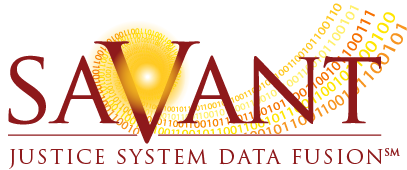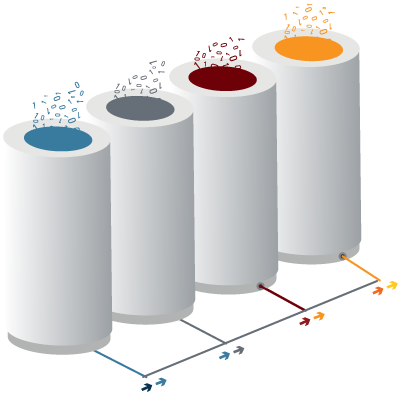Transform the Data
Our Data Analytics team possesses vast knowledge and expertise in transforming raw justice system data. We extract, cleanse, conduct quality assurance checks, and validate each data source. We then employ sophisticated methodologies to standardize, transform, and link the data from siloed software systems. We have successfully integrated justice system siloed data (e.g., law enforcement, jail, courts, prosecutor, pretrial services) and partnered with communities to increase operational transparency; reduce racial and ethnic disparities; responsibly lower jail populations; and identify, implement, and monitor justice system reforms. Our unmatched experience in justice system data integration has led to the development and successful deployment of matching and linking algorithms, as well as a model for generating key performance metrics – saVant – Justice System Data Fusion℠.
Matching and linking algorithms
Luminosity has developed, tested, and deployed numerous matching and linking algorithms for criminal justice data. One algorithm, for example, was developed to identify a unique individual within a single data source and across multiple data sources. In addition to exact matching in stages on proven combinations of demographic indicators, a name matching algorithm is used which relies on existing Double Metaphone and Levenshtein Distance algorithms. Linking strategies at the person, arrest event, and case levels across systems (many developed and successfully deployed by Luminosity) are used to transform the data.
saVant – Justice System Data Fusion℠
The cleansed and linked data are used to create the measures identified during Stage One – Define Project Objectives. For measures related to the pretrial phase of the justice system (law enforcement contact through case resolution), our team leverages Luminosity’s model for generating key performance metrics – saVant – Justice System Data Fusion℠. saVant consists of more than 50 research, performance, and outcome (RPO) measures critical to pretrial justice systems including elements related to (1) arrest and commitment; (2) assessment, recommendation, and decision; (3) release and detention; (4) case processing; and (5) pretrial outcomes. The RPO measures are accompanied by detailed definitions; required data elements; business logic documents; flowcharts, timelines, and other visualizations; and sample-code. In addition, saVant contains well-defined tracking units of measurement (i.e., Person Arrest Event [PAE], case, charge); person and justice system descriptors; linking strategies; and probabilistic matching algorithms. Our model has been successfully validated on data from counties in North Carolina, Wisconsin, and Ohio, as well as the State of New Jersey. Our team has partnered with several cities across the country to apply saVant to generate the RPO measures and illuminate actionable insights (see Mecklenburg County, North Carolina and New York City, New York).




